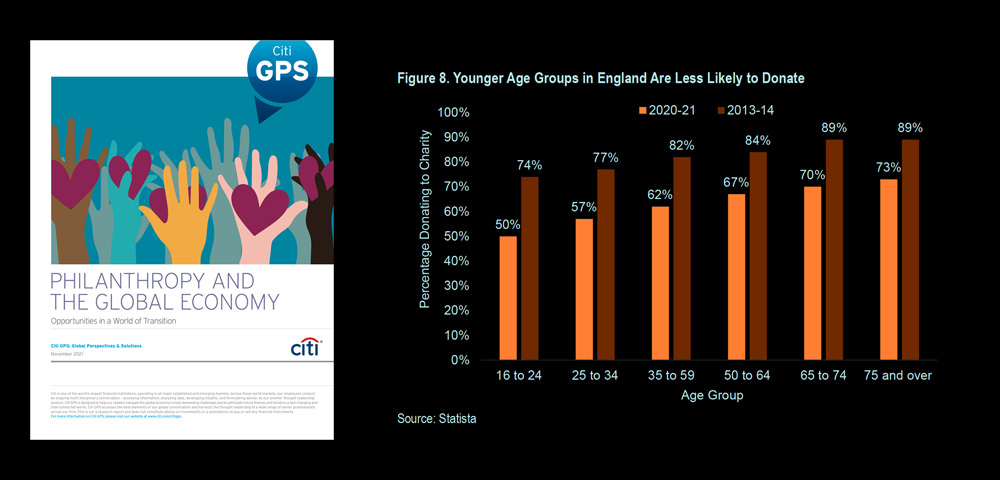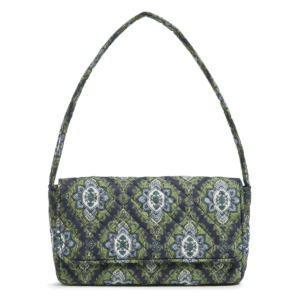NFTs are helping these breast cancer charities reach younger audiences
There has been a worrying trend over the last five years that the number of people donating continues to decline.
These aren’t my words, they are the words of The Charities Aid Foundation’s Chief Executive, Neil Heslop.
As statistics from The Generosity Commission show, the giving rate among under 30s (in the U.S.), which stood at over 47% in 2005, had declined to less than 29% by 2015. And in the U.K. the numbers aren’t much better. Comparisons between 2013-14 and 2020-21, show donations falling 24% and 20% respectively.
Understanding and responding to these factors is vital for the philanthropic sector if a widespread bedrock of future donors is to be built from today’s younger generation.
Again, these aren’t my words. They are from CitiBank’s 2021 philanthropy and global economy report Opportunities in a World of Transition.
Responding to these factors, some charities are looking at the opportunities presented by the worlds of Web3, Crypto, the MetaVerse, and NFTs.
This open-mindedness not only allows them to expand their donation methods and connect with a younger audience, but said younger audience is also far more generous too. As stats from Galaxy Research show, the average crypto donation equates to $10,455 versus $128 from cash donors twenty-six years older.
Donations aside for a moment, NFTs are helping some charities increase much-needed engagement and awareness for life-threatening diseases. Notably, a number of breast cancer-focused organisations for 2022’s Breast Cancer Awareness Month.
Shaney Jo Darden, founder of the Keep A Breast Foundation (KAB) – a California-based nonprofit that aims to reduce breast cancer risk – recently told Cointelegraph:
“Even though women over the age of 40 are typically diagnosed with breast cancer, early detection can result in a 98% survival rate. Given this, KAB aims to generate awareness about breast cancer through encouraging and fun ways, like using NFTs to educate young women.”
To reach a far wider audience in 2021, rather than conducting a typical membership drive or gala, KAB hosted an exhibition in the CryptoVoxels metaverse. Off the back of their metaverse success, this year KAB’s Web3 initiative is a partnership with NFT project NFTitties.
The women-led project celebrates women, art and breasts to raise funds to fight breast cancer. Carlota Dochao Naveira, founder of NFTitties said almost 30 NFTs were sold during the launch week. Furthermore, she also pointed out that due to the project encouraging women artists, activists and others to submit their artwork, NFTitties has helped onboard more women into the Web3 ecosystem.
Driving further fundraising and female-led conversations in Web3 is world-renowned handbag designer Vera Bradley. The Vera Bradley Foundation for Breast Cancer was created in the early 1990s in honour of Mary Sloane, one of the company’s first sales representatives who died from breast cancer.
To date, over $38m has been raised and donated to support advancements in breast cancer. And as announced on October 3rd 2022, they are embracing NFTs to bridge “the digital and physical worlds” with their Heritage Pass and The 1982 Collection.
The NFT collections will include a genesis drop comprised of 440 standardised tokens as well as a second drop of 1,982 unique generative art backgrounds created from Vera Bradley’s iconic heritage prints.
Buyers of each Heritage Pass NFT will also receive a limited-edition Jilly Bag with 100% of all net proceeds being donated to the foundation to support critical advancements in breast cancer research.
While it’s still too early to know how much the NFTs will raise, the 1,982 unique profile picture (PFP) art backgrounds have an immediate purpose, as Jennifer Bova, vice president of marketing at Vera Bradley explains:
“Through its NFT PFP backgrounds, Vera Bradley hopes to drive awareness for fundraising, as well as female-led conversations and initiatives in Web3”
Susan G. Komen, a leading breast cancer research foundation, has recently started accepting crypto donations as a way for cryptocurrency holders to give back.
The charity’s VP of marketing strategy, Michelle Strong, explains that approximately 18 months ago, they started receiving requests regarding cryptocurrency donations:
“We implemented this feature nearly a year ago with the help of The Giving Block. This has driven interest from both current and new donors, as crypto donations have opened doors to those who haven’t been able to give before but were interested in being charitable”
Strong goes on to explain how the crypto donation’s successful implementation is being rolled out further to help drive additional funding for the organisation’s metastatic breast cancer excellence in research award:
“Oct. 13 this year is ‘metastatic breast cancer’ day, which is the most advanced stage of the disease. Susan G. Komen is giving out the excellence in research award to bolster investment around this specific area of research, and cryptocurrency is another great way to support this”
But their embrace of new technologies doesn’t stop there. Albeit coy, Strong hinted at a potential NFT project on the horizon too:
“Susan G. Komen is happy to benefit from NFT projects that others are able to pull together. We are currently in conversation with an NFT project that aims to benefit our organization”
The examples above back up findings from a recent report from crypto donation platform, The Giving Block, which found that charities using NFT-related projects are presented with the opportunity to connect with younger donor demographics while also diversifying donation methods.
In the face of declining revenues from diminishing donor groups, charities being open-minded about the multitude of possibilities Web3, Crypto and NFTs present, may just be the ones who not only engage on a deeper level with today’s younger audiences but guarantee lucrative revenue streams from those generous future donors too.



